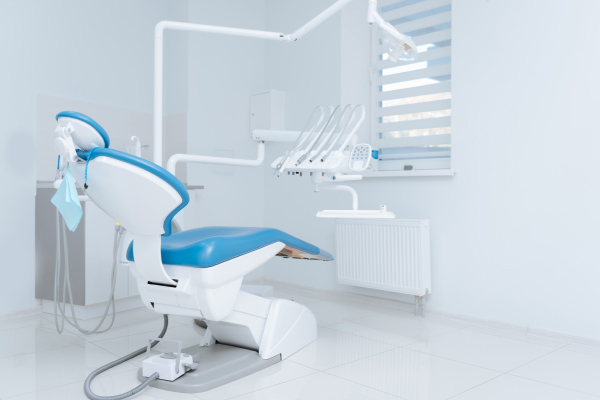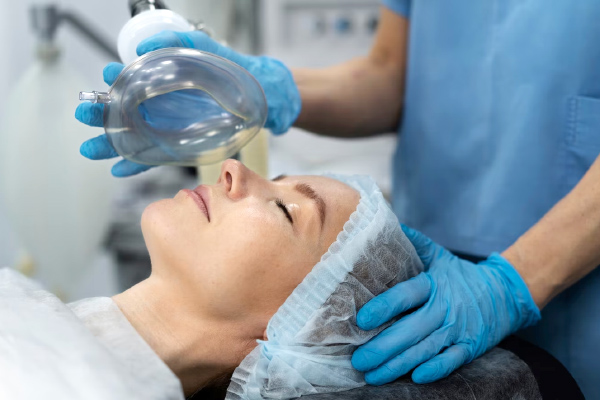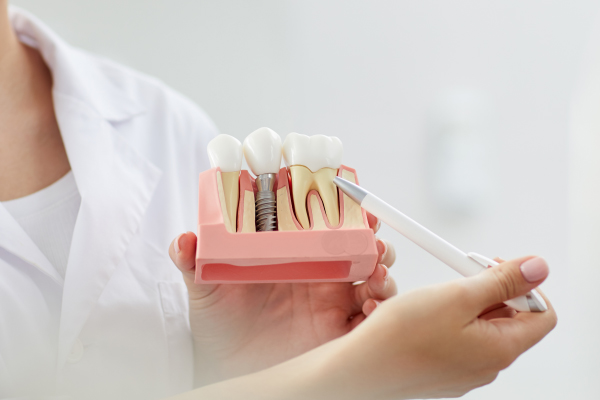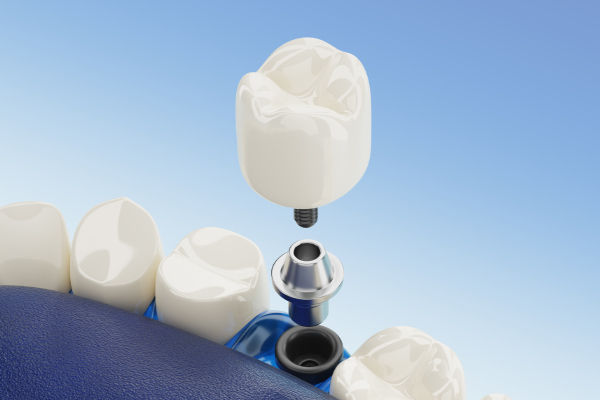What is sedation?
Sedation is a relaxation procedure given to patients before medical procedures that may cause pain or discomfort. With the help of various medications, sedation is applied to reduce patients’ anxiety before surgery and various medical procedures, prevent involuntary reactions of the body and relieve pain during procedures. These drugs, called sedatives, can be given to the patient orally or intravenously. The dosage of the administered drugs varies depending on the patient’s age, health condition, type and duration of the surgery. For this reason, the type and dosage of the drug must be determined as a result of expert evaluation before the procedure.
Is Dental Treatment Performed with Sedation?
Dental treatment with sedation is especially popular among those with dental phobia. It is recommended as an alternative to overcome dental phobia. Sedation is applied before tooth extraction. Amount of sedative to be administered; The procedure performed may vary depending on your body’s response to anesthesia, your age, medical habits and health condition. So how is dental treatment done with sedation? We found the answer to the question.
In Which Situations Can Sedation Be Applied?
Sedation, especially used in local/regional surgery, MRI/CT procedures, claustrophobia and dental fear, and in young children, helps the person protect all his reflexes and feel more comfortable with sedation. The anesthesiologist prescribes appropriate medications according to the patient’s medical history and age and applies appropriate sedation methods to the patient. The patient must stop eating and drinking six hours before the procedure. During the procedure; People’s pulse, blood pressure and oxygen levels are constantly measured. A sedative procedure creates a feeling of relaxation and drowsiness in the person.
What is Sedation (Conscious Sedation)?
Conscious sedation; It is a lighter form of sedation and the patient cooperates with the doctor during the operation. It is not general anesthesia and can be used in a dental office without a hospital or operating room. The patient can follow the doctor’s instructions. Dialogue between patient and doctor is possible. When the doctor tells the patient to open his mouth, the patient simply does so.
How is dental treatment performed with sedation ? Before the procedure, the anesthesiologist measures the patient’s pulse and blood pressure. This tests whether the patient can maintain an open airway and respond appropriately to physical stimuli and verbal commands. In this method, which is defined as a situation in which consciousness is suppressed, pediatric patients forget that they even came to the dentist after the procedure. After surgery, the patient is free of medication, pain, etc. experiences effects.
Since it is not remembered, it is not exposed to psychological trauma. This makes it easier for the patient to access dental treatment and surgical procedures in subsequent sessions.
To Whom Can Sedation Be Applied?
Sedation can be used by anyone, including children of a certain age. Sedation is not general anesthesia, it is used in the dentist’s office, not in the hospital or operating room. The patient’s pulse and blood pressure are monitored during the procedure. In cases where sedation is not sufficient, the ideal solution is general anesthesia.
Although sedation can be applied to almost everyone without any problems, in some special cases general anesthesia is the ideal solution for the patient. General anesthesia is a state of deep sleep. Unlike sedation, the patient is completely unconscious. The patient cannot hear what is said or respond to the doctor’s orders. It can be used easily in situations where the patient must remain motionless for their safety or in special situations where sedation cannot be used.
Can I Hear Surrounding Sounds and Speak While Under Sedation?
In patients who are sedated, the patient does not remember or notice the operation . Ankara sedation hospitals also apply conscious sedation, which is a type of sedation. In this case, local or general anesthesia is supported; The sedative given to the patient is very mild. Therefore, the patient is aware of and understands the commands given. The patient receiving conscious sedation remains conscious throughout the treatment. He is aware of what is happening around him and hears and understands what the doctor says. The patient who is consciously sedated can communicate with the doctor during treatment. In conscious sedation, the patient receives milder medications than in deep sedation.
In Which Treatments Is Sedation Recommended?
In addition to general anesthesia and local anesthesia, one of the most popular sleep techniques for lighter procedures is sedation. Sedation, which relaxes and relaxes and reduces pain and discomfort, is a method frequently used in many medical fields and hospitals in Ankara. There are hospitals that provide sedation in Ankara . These; There are endoscopy, the dreaded MRI scans, colonoscopy, dental units and radioactive shots.
What are the Sedation Fees?
Another factor that determines the price of sedation is the type of sedation treatment and to whom it is performed. For example, the price of dental treatment with sedation and endoscopy is different. Sedation is a method that can be used in children and adults. The net price is determined only after consultation with the doctor.
When is Sedation Necessary?
It is a method that can be applied to anyone who does not have an allergic disease. This method, which is quite suitable compared to anesthesia, is mostly applied to those who are afraid of the dentist or needles, those who cannot receive dental treatment due to reflexes such as nausea and vomiting, and children. In addition, long-term procedures can be performed in a single session, and in treatments that require many procedures, the sedation method is used to put the patient to sleep.
Why Can’t You Eat or Drink Anything Within 6-8 Hours Before Sedation?
Ankara sedation dentistry and hospitals that apply sedation will inform you that patients receiving anesthesia should be on an empty stomach. Because while the patient is under anesthesia, a full stomach and acidic gastric juice can leave the esophagus and enter the trachea, which is undesirable and can cause life-threatening situations.
Adult patients should not eat anything for at least 6-8 hours before surgery. Clear liquids such as water, tea and lime juice can be taken up to one glass 2 hours before surgery. Carbonated milk drinks and soups should be avoided. Medications used regularly can be taken with half a glass of water, in consultation with the doctor, one hour before the surgery.
Some mothers feed their babies before surgery without a doctor’s permission because they think a small amount of food will not harm the baby, but this is wrong.
What are the advantages of sedation?
Of course, sedation provides patients with a more comfortable dental treatment. Additionally, Ankara hosts many institutions for dental sedation . It should also be noted that no pain or suffering is felt thanks to this procedure. It is possible to complete the dental treatment at the dentist in a shorter time because the patients feel very comfortable. Especially with moderate or deep sedation, patients do not remember the treatment. Thus, difficult and long-term treatments can be carried out very easily. This anesthesia may be a more ideal choice, especially for those who are afraid of dental procedures. Because if these patients feel some pain during the treatment or if the treatment takes a little longer, the fear they experience increases. There may even be patients who discontinue treatment.
What are the differences between sedation and general anesthesia?
First of all, what is sedation? Let’s answer the question: Although the sedation method, also known as deep sleep, is actually an anesthesia method, it is different from general anesthesia. If the patient is unconscious under general anesthesia, the patient may remain conscious with the sedation method, but no pain is felt in either method.
At this stage, it is a method that puts the patient to sleep and relaxes with its sedative effect. A sedated patient regains consciousness and experiences temporary amnesia. In general anesthesia, the patient is completely unconscious. Vital functions of a patient with a closed nervous system, such as breathing, are performed by machines.
Is Sedation a General Anesthesia?
What is sedation ? Sedation is not general anesthesia. Sedation is the name of the process, also called deep sleep, performed by general anesthesia specialists and technicians in the operating room of our center in order to eliminate pain, anxiety, fear and nausea that may occur during dental treatments.
While the patient is asleep, due to the effect of sedatives, he does not remember the content of the procedure, the pain, or the sounds after the treatment. This makes it easier for the patient to come to the dentist in the future. It eliminates dental phobia and eliminates the perception of pain.
General anesthesia is a condition in which the patient loses consciousness due to the medications given in the operating room and under the supervision of an anesthesiologist. The patient does not remember anything about the procedure . The difference between sedation technique and sedation is that the patient is semi-conscious. In dentistry, general anesthesia is mostly used for fear, anxiety and advanced surgical procedures.
Is it necessary to fast before sedation?
In order to receive sedation, the patient must remain hungry for 4-5 hours. The patient is sedated by giving intravenous medication. Giving children oral medication with fruit juice, which opens their blood vessels, creates calmness. The vein is then opened. Maintenance of the sedative state is provided by intravenous drug administration. At the end of the procedure, another drug is given that eliminates the effect of the drug used and sedation is stopped. The patient is taken to the rest room, kept for half an hour to 1 hour as a precaution, and sent home.
For which patients is sedation risky and for whom should it not be applied?
It can be safely applied to a wide age range, from newborns to older adults. The frequency of use is increasing, especially in children. In order for sedation to be performed safely, the patient must stop eating and drinking 2 hours before the procedure begins. While this is usually a method used to administer intravenous sedation or oral medication/syrup, it can sometimes be used to inhale anesthetic gases through a face mask. During sedation, the doctor constantly monitors the blood oxygen level, pulse and blood pressure and, if necessary, administers oxygen through an oxygen mask.
Sedation Prices?
In this context, one of the most frequently asked questions is the price of sedation. However, talking about price may mislead patients. Because prices may vary depending on some factors such as the experience of the anesthesiologist. For this reason, patients doing price research may come across different figures, and this is very normal. In general, we can say that the prices are not as high as we thought.
For what purpose is sedation performed?
sedation ; The use of sedatives to reduce anxiety, discomfort, and pain during certain procedures. This procedure is sometimes performed with oral medications and sometimes with anesthetics administered through injection.
Can Pain Be Felt During Sedation?
Under sedation and anesthesia, the patient does not feel pain or suffering. The sedated patient is conscious, the anesthetized patient is unconscious.
What are the Purposes of Conscious Sedation?
In addition to creating a comfortable and safe environment for the patient, it completely eliminates the feeling of fear and anxiety. This increases the patient’s pain threshold and ensures that he or she does not feel pain.
How is Sedation Done?
Sedation may be used by opening the vein and injecting an anesthetic drug. However, this is not the only method; sedation can also be done orally.
What are the Risks of Sedation?
Side effects after sedation; arrhythmia is increased blood pressure or low blood pressure. Any use of medication should also be reported to the physician.
What is the Difference Between Sedation and General Anesthesia?
In the sedation method, the patient continues to breathe normally, while in general anesthesia, breathing is done by intubation. During intubation, the patient is given intravenous muscle relaxants.
How Long Does the Sedation Effect Last?
The sedated patient usually wakes up five to ten minutes after the procedure. Half an hour later, he feels that nothing has been done to him. However, sometimes, depending on the patient’s condition, sleepiness may last up to two hours or even three or four hours.
Is Sedation Harmful?
The sedation procedure does not have any significant risks. However, some patients may experience fatigue, decreased reflexes, low blood pressure, headaches and short-term memory loss after calming down.
 ONLINE APPOINTMENT CALL NOW
ONLINE APPOINTMENT CALL NOW






